Species
Conservation programs funded by the National Fish and Wildlife Foundation benefit hundreds of species and the habitats they depend on across the United States. NFWF has developed conservation strategies with measurable outcomes that track progress for many of these species. These species are good indicators of healthy habitats.
These strategies and metrics can be found in NFWF’s business plans developed by scientists and other experts, and approved by the Foundation's Board of Directors. NFWF programs fund conservation grants that implement the strategies and actions identified in the business plan.
Click on the species to learn a little about it, and which programs fund grants to conserve the species and its habitat.
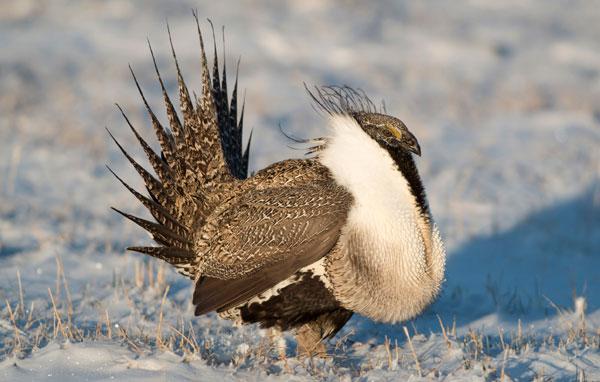
Greater sage-grouse
The greater sage-grouse is a sagebrush-dependent upland game bird and largest of the grouse species. Known for its theatrical mating displays on "leks" or breeding grounds, populations have been in decline due to loss of sagebrush habitat, and their ability to serve as an umbrella species for other sagebrush wildlife emphasizes the need to restore and protect their habitats.

Green sea turtle
Green sea turtles are found around the world, nesting in more than 80 countries including on U.S. beaches, where sustained conservation efforts have contributed to increasing populations in Florida, Hawai'i and across all five U.S. territories. Reaching more than 300 pounds, these gentle giants feed almost exclusively on seagrasses and algae.
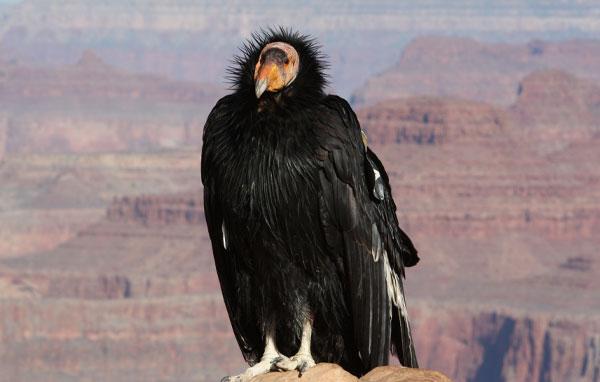
California condor
The California condor is the largest land bird in North America. In 1981, there were only 22 individuals remaining, but the species is increasing in numbers after being taken into captivity, bred and released to locations in California, Baja California, and Arizona. However, the California condor still highly threatened and dependent on conservation.
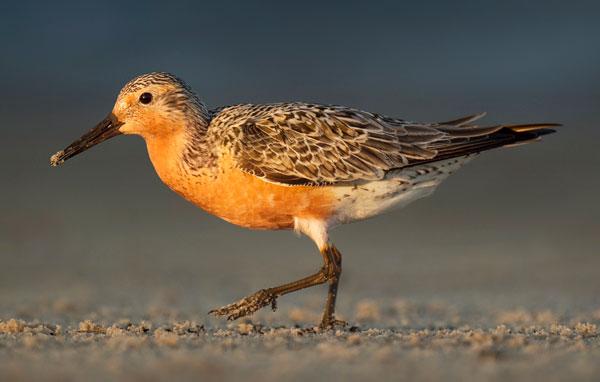
Red knot
The red knot is a shorebird known for long-distance migrations, with some populations traveling from Argentina to the Arctic every year. Stopover areas providing high-quality foraging habitat are critically important for the red knot. For example, large numbers of red knots arrive in Delaware Bay during their spring migration to feed upon horseshoe crab eggs, which provide an excellent source of energy that fuels completion of the northward migration and contributes to successful reproduction.
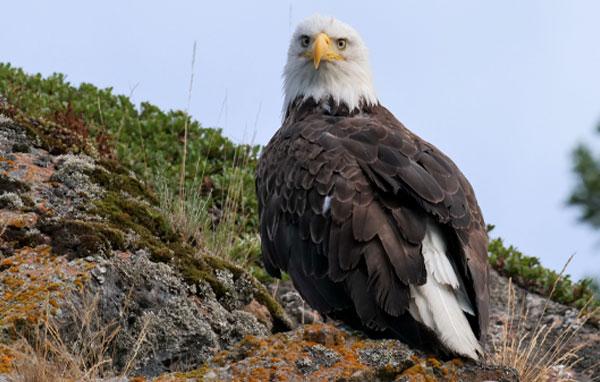
Bald eagle
The majestic bald eagle was chosen as the emblem of the United States in 1782. The species represents a tremendous conservation success story, with population numbers increasing sharply following a ban on the chemical DDT in 1972, which was poisoning bald eagles when they ate contaminated fish.
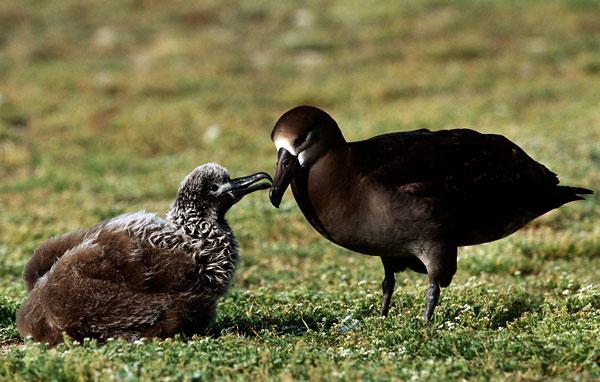
Black-footed albatross
The black-footed albatross is the smallest of three north Pacific albatrosses. Populations of all three species were devastated by feather hunters during the early 20th century with many colonies extirpated in the central and western Pacific. Today 95 percent of the global population nests in the Papahānaumokuākea Marine National Monument.
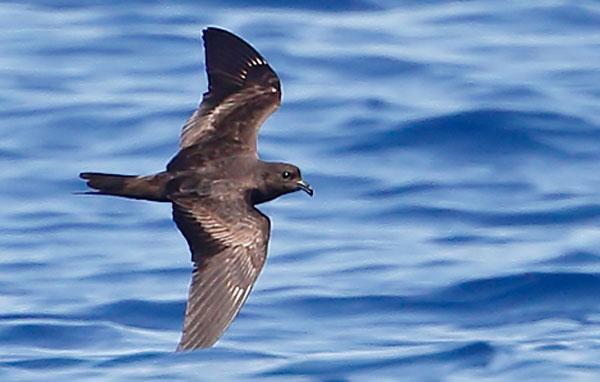
Black storm-petrel
Black storm-petrels are an agile, burrow- or crevice-nesting colonial seabird that lay a single egg and nest on offshore islands and rocks from southern California southward along the Baja peninsula of Mexico. Storm-petrels are the smallest members of the Procellariiformes order, an oceanic long-lived seabird group that includes albatrosses, shearwaters and petrels.
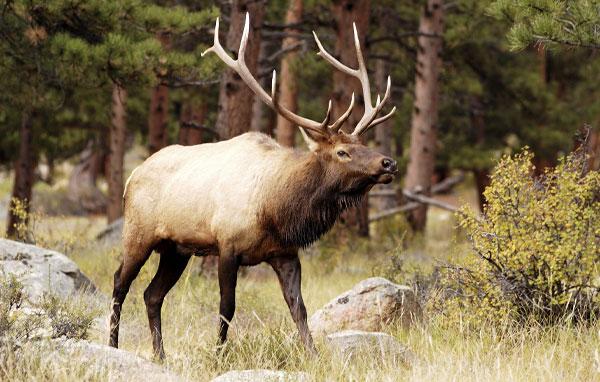
Elk
Elk are large herbivores known for the males' widely branching antlers and iconic bugle-call during fall mating season. Elk prefer open woodlands, and some populations migrate long distances between high-altitude summer ranges where they give birth, and low-altitude winter ranges to escape harsh winters.
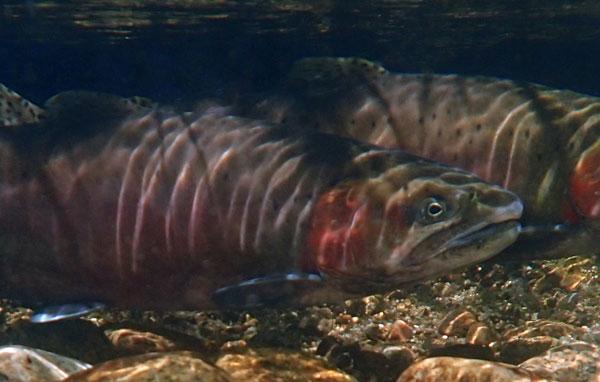
Lahontan cutthroat trout
The Lahontan cutthroat trout is a distinct species of cutthroat trout, native to cold-water habitats throughout the Lahontan Basin of northern Nevada, eastern California, and southern Oregon. Lahontan cutthroat trout have been listed as “threatened” under the Endangered Species Act since 1975, with key threats identified as habitat fragmentation and degradation that have led to genetic isolation and increased competition.
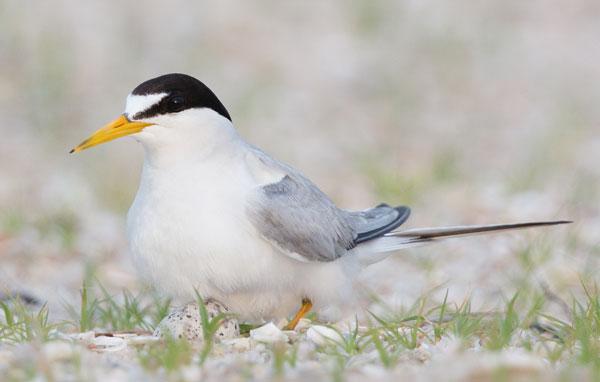
Least tern
Least terns are a small migratory North American tern with three distinct populations -- Atlantic coastal, interior and southern California. They are a vocal, colonial seabird vulnerable to development, human disturbance and predation on coastal nesting beaches. In some locations, least terns have begun successfully nesting on flat gravel roofs and are in general responsive to management actions.
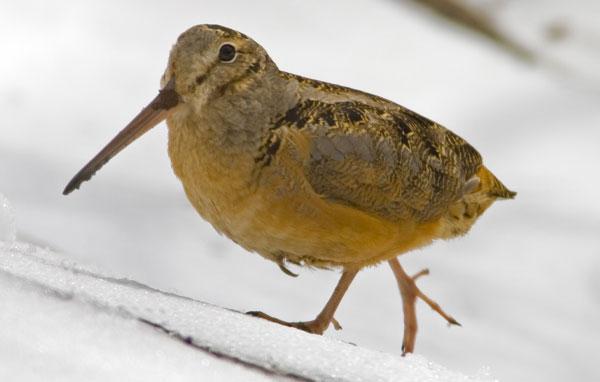
American woodcock
The American woodcock is a well-camouflaged migratory woodland shorebird. The bird feeds on earthworms, is a popular game species, and requires early successional forest habitat for feeding and nesting. Woodcocks are harbingers of spring, with returning males conducting elaborate aerial courtship displays along old field edges as the last winter snows recede.

Red-cockaded woodpecker
The red-cockaded woodpecker is a territorial, highly social bird that inhabits fire-maintained mature pine forests throughout the southeastern United States. Population declines coincided with extensive logging of longleaf pine stands in the early 20th century, and led to the species being placed on the Endangered Species List by 1970.
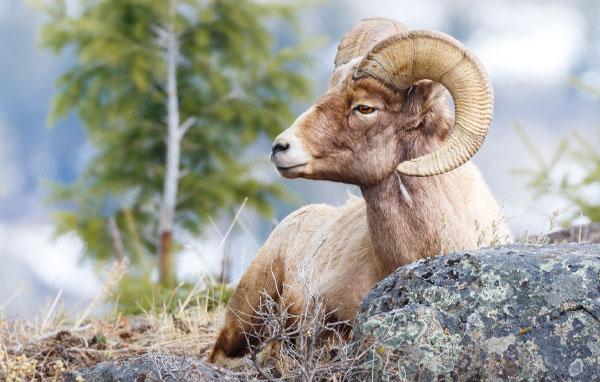
Bighorn sheep
Bighorn sheep are agile climbers with specialized hooves that allow them to navigate rugged, rocky slopes where they forage on a variety of seasonal plants and shrubs. Found in the western United States, bighorn sheep live in social groups, but males, or rams, and females, or ewes, only meet to mate.
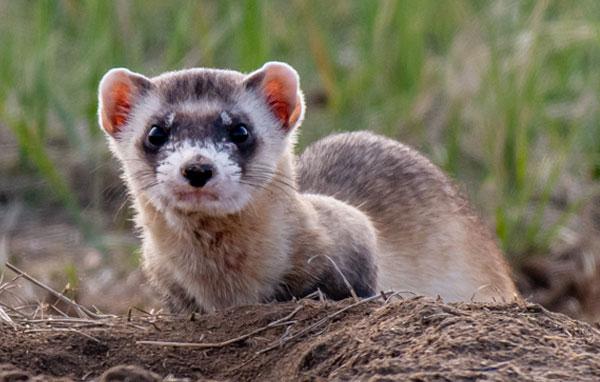
Black-footed ferret
Thought to be extinct in the wild until 1981, the critically endangered black-footed ferret is North America's only native ferret species and a member of the weasel family. Loss of native grasslands, disease, and declines in prey abundance contributed heavily to their decline, but captive breeding and reintroduction programs have helped this species reestablish small portions of their historic range.
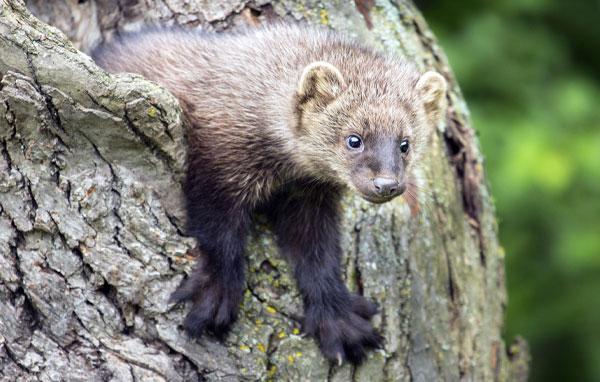
Fisher
Fishers are a forest-dwelling member of the Mustelidae, or weasel family, and have reclaimed much of their historic range after unregulated fur trapping and forest clearing caused severe population declines. They are specialized predators of porcupines and the only carnivore species that deliberately target them as prey.
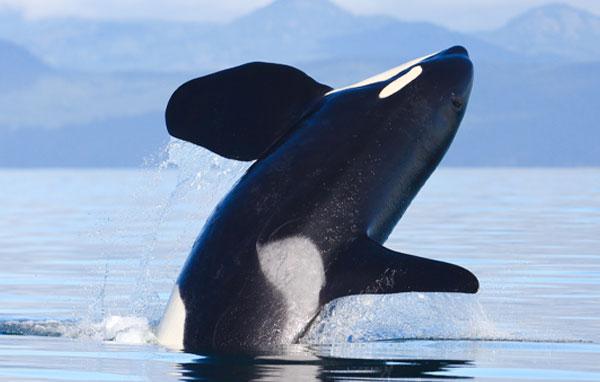
Killer whale
Weighing as much as 11 tons and measuring up to 32 feet in length, killer whales are the largest oceanic dolphins and a top marine predator. While they are widely distributed throughout the world’s oceans, the endangered Southern Resident population, which spend most of their time in the inland waters of the Salish Sea, is declining significantly with just 73 animals remaining.
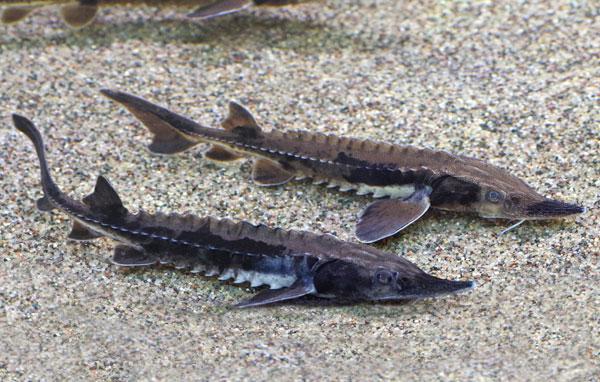
Lake sturgeon
The lake sturgeon is native to rivers and lakes from Hudson Bay to the Mississippi River. It is among the longest-living fish, with some individuals living more than 100 years. A species that evolved more than 150 million years ago, overfishing, particularly in the Great Lakes system, has decimated populations and recovery has been slow due to low reproductive rates and other sustained antropogenic threats such as pollution and introduced aquatic species.
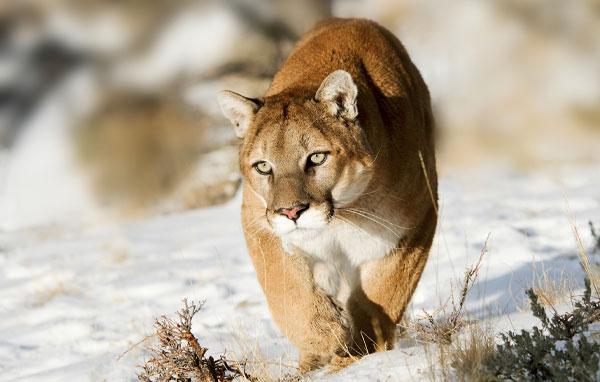
Cougar
The cougar, also known as mountain lion or puma, is a powerful predator that is found in a variety of habitat types from Canada into South America. Cougars are stealthy ambush hunters that can exploit many prey types, although their primary food source is deer. Cougars actively patrol large home territories and survive in low densities.
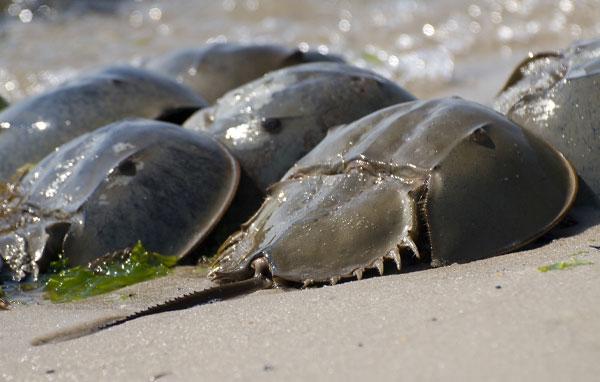
American horseshoe crab
The American horseshoe crab plays an integral ecological role, particularly in the Delaware Bay where hundreds of thousands of shorebirds rely on horseshoe crab eggs to build energy reserves for their northward migration. Contrary to their name, horseshoe crabs are in fact not crabs at all. They are arthropods, making them more closely related to spiders and scorpions.

Whimbrel
The whimbrel is a large shorebird that uses its long, curved bills to feed on crabs and other invertebrates in the sand or mud. The most widespread of the curlew species, these birds winter throughout the Caribbean and northern South America and nest in the low-Arctic. Restoring and protecting critical foraging sites is an important strategy for maintaining a healthy population.
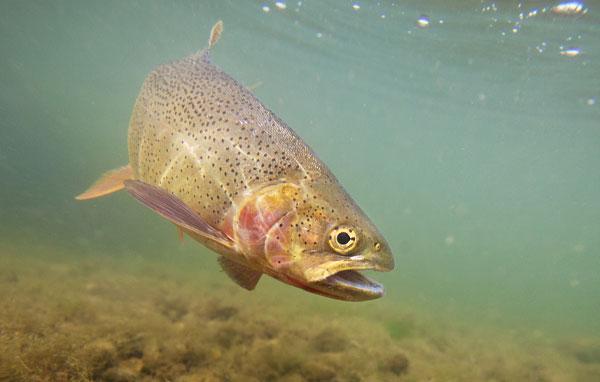
Cutthroat trout
Cutthroat trout (Oncorhynchus clarkii) encompasses a number of distinct trout subspecies. These are iconic denizens of western landscapes, known for the red "cutthroat" under their jaw. They are associated with cold, clean, highly oxygenated streams, though many of the forms live in lakes and one is anadromous. Cutthroat trout are impacted by stream barriers, invasive fish and de-watering of their habitat.
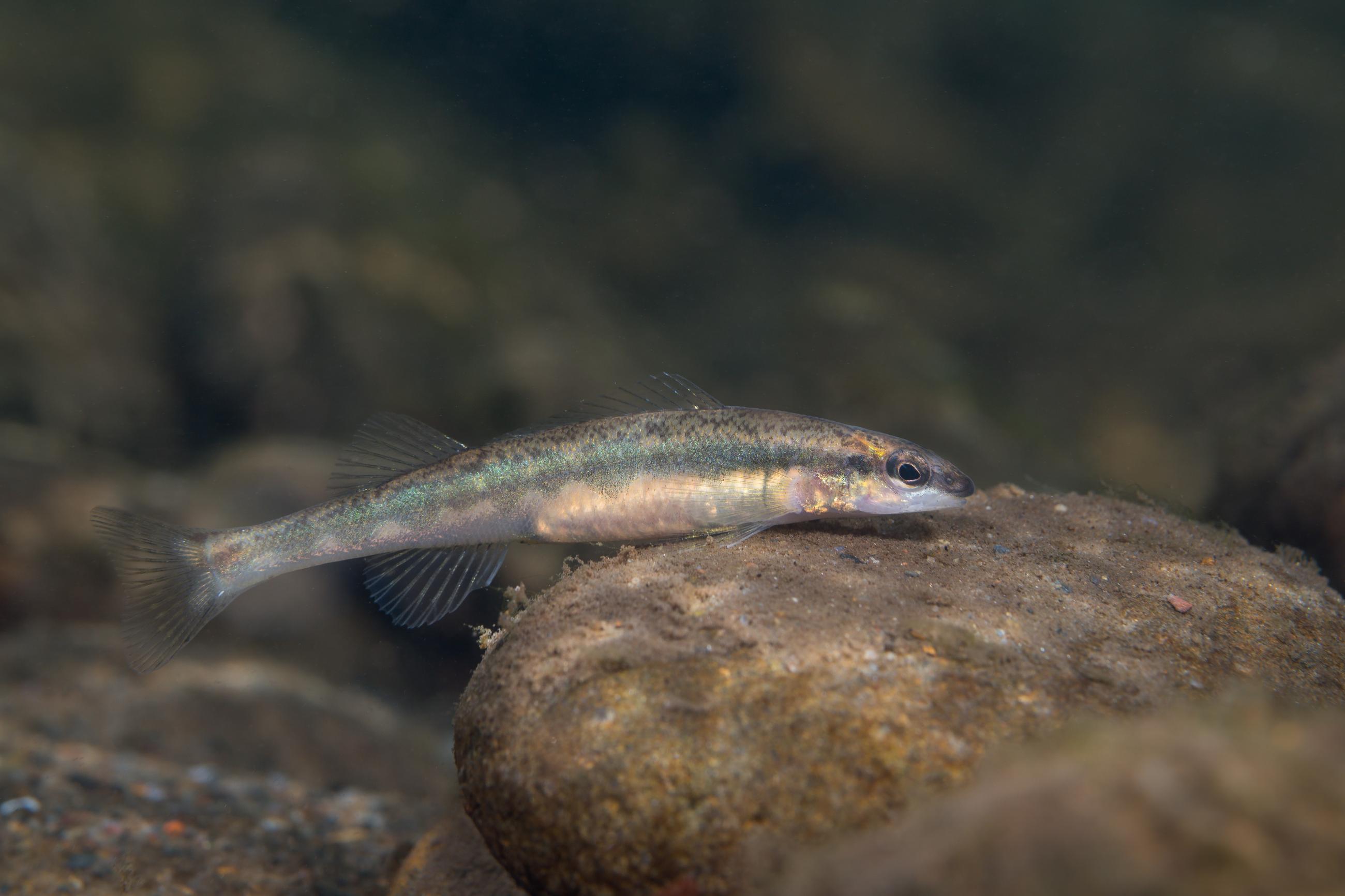
Bridled darter
The bridled darter is a small, freshwater fish discovered in 2007 that has a limited distribution within the headwaters of the Coosa River in northern Georgia and southern Tennessee. This species is threatened by runoff caused by agriculture and forestry activities as it is very sensitive to water pollutants.

Pollinators
Pollinators are a group of insect, avian and mammalian species that fertilize many flowering plants and agricultural crops by transferring pollen from the male structures (anthers) to the female structures (stigma) during foraging. More than 80 percent of flowering plants on Earth need pollinators to produce the next generation, and it is estimated that they add hundreds of billions of dollars to the global economy, highlighting their extreme importance to human food security.
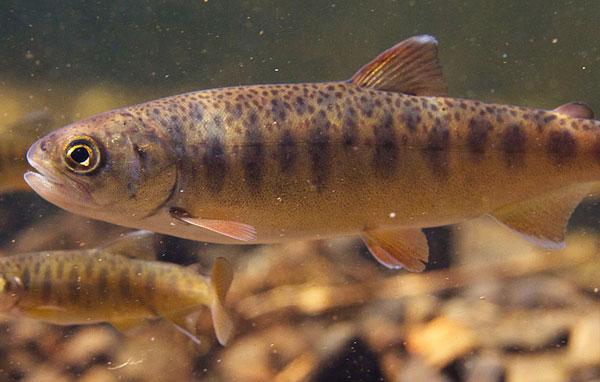
Central California Coast coho salmon
The central California coast coho salmon is an evolutionarily significant unit of coho salmon that are found from central California near Punta Gorda to the northern border of California. They are an endangered species that rely on proper timing of streamflows in rivers to allow individuals to spawn and increase juvenile survival.
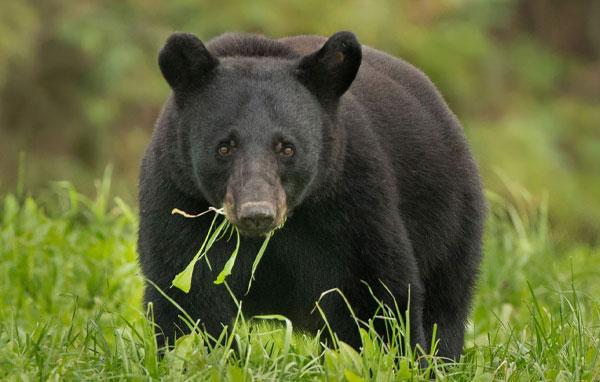
Louisiana black bear
One of 16 subspecies of the American black bear, the Louisiana black bear was listed as threatened in 1992 under the Endangered Species Act, citing habitat loss and fragmentation as primary threats to their populations. Significant improvements in population size and habitat achieved through concerted reforestation efforts and translocations resulted in the Louisiana black bear’s removal from the Endangered Species List in 2016.

Elkhorn coral
Elkhorn coral is one of the most important reef-building corals found in the Caribbean, where individual colonies can grow more than 6 feet in height and 12 feet in diameter. Elkhorn coral were listed as threatened following a severe disease outbreak that caused widespread mortality, decimating the population to less than 3 percent of its former abundance. Warming ocean temperatures are a further stress on these corals.
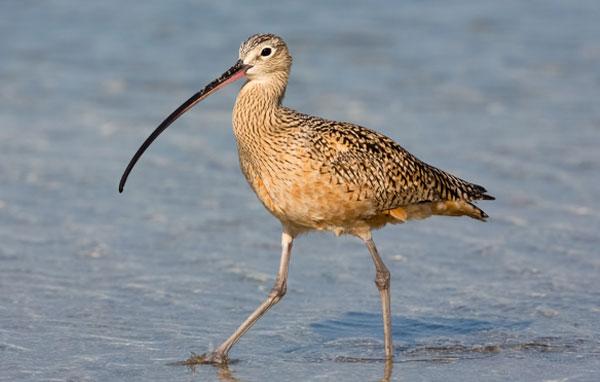
Long-billed curlew
Long-billed curlew are a charismatic member of the Northern Great Plains bird fauna. The species is North America's largest shorebird and are of conservation concern due to long-term declines and pervasive threats across both nesting and wintering locations. Long-billed curlews use their very long decurved bill to probe for crabs, shrimp and mollusks in the coastal marshes and mudflats of California and Mexico during their non-breeding period, and to pick up grasshoppers and other terrestrial insects as they trundle along through the prairie.
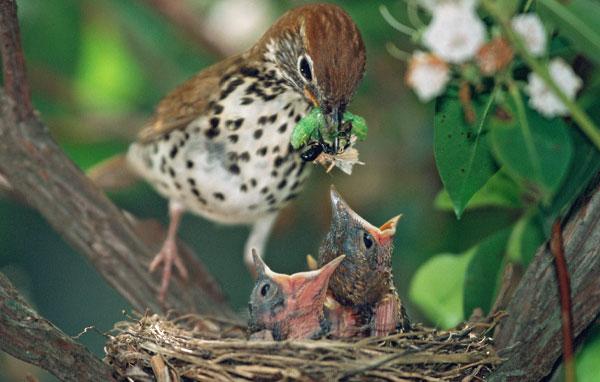
Wood thrush
A well-known inhabitant of eastern deciduous forests, the wood thrush is known for its flute-like song during the mating season. Wood thrush are excellent indicators of moist, mature forests with structurally complex mid and understories. Habitat loss and degraded habitat quality on both breeding and wintering grounds have resulted in population declines since at least 1970.
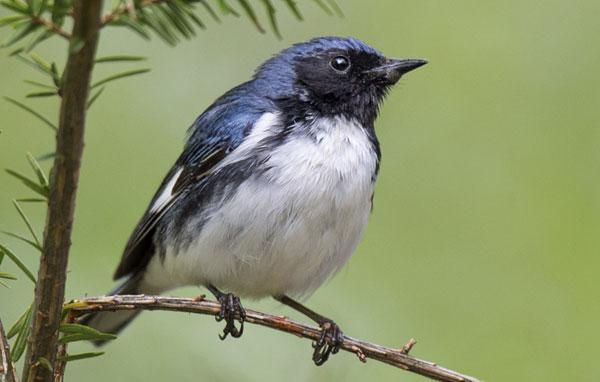
Black-throated blue warbler
Black-throated blue warbler is a neotropical migrant that nests in the rich deciduous and mixed coniferous forests of eastern North America. Breeding male and females are sexually dimorphic, meaning they have vastly different appearances—so much so that they were originally described as two separate species. While males have a black face and throat with a blue head and back, females are a plain grayish olive color.
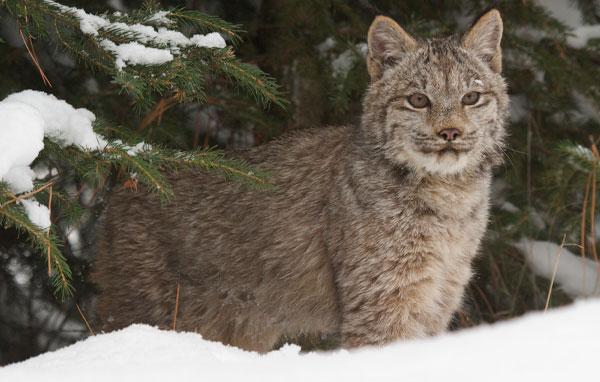
Canada lynx
The threatened Canada Lynx is a medium-sized carnivore that inhabits boreal forests where their massive paws make them adapted to traveling through deep snow. These solitary hunters rely on contiguous, structurally diverse forest habitat that support abundant populations of their favorite prey, the snowshoe hare.

Southwest willow flycatcher
The southwestern willow flycatcher, a subspecies of the broadly distributed willow flycatcher, is a small songbird that is currently listed as endangered under the Endangered Species Act and breeds in densely vegetated riparian buffers throughout the Southwest. The loss of these native riparian habitats along with water diversion, invasive vegetation and brood parasitism by brown-headed cowbirds have caused major declines in abundance for this subspecies.
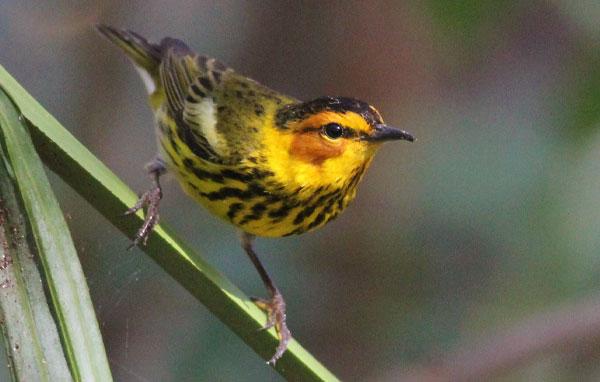
Cape May warbler
Cape May warbler is a spruce-fir boreal forest-nesting neotropical migrant that spends the breeding season in northern North America and non-breeding period in the Caribbean. They are often seen as a flash of brilliant yellow and rust as they forage actively in the tops of trees where they are dependent on spruce budworm caterpillars.
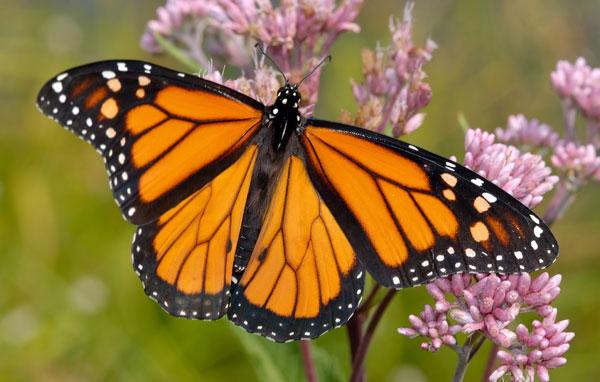
Monarch butterfly
One of North America's most iconic species, the monarch butterfly is best known for its spectacular 3,000-mile annual migration from its northern breeding grounds to wintering grounds in central Mexico. A distinct, western monarch population migrates between the western states and their winter range in coastal California; both the eastern and western populations have been negatively affected by habitat loss and reduction in milkweed plants that serve as the sole food source for monarch caterpillars.
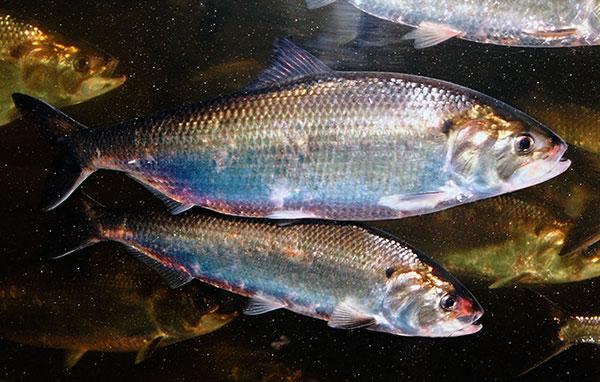
American shad
The American shad is an anadromous fish that can be found in rivers and coastal waters along the entire Atlantic coast. Once supporting a large commercial fishery, shad have declined in abundance following decades of overfishing and the construction of dams along migration routes, which reduces access to spawning habitat.
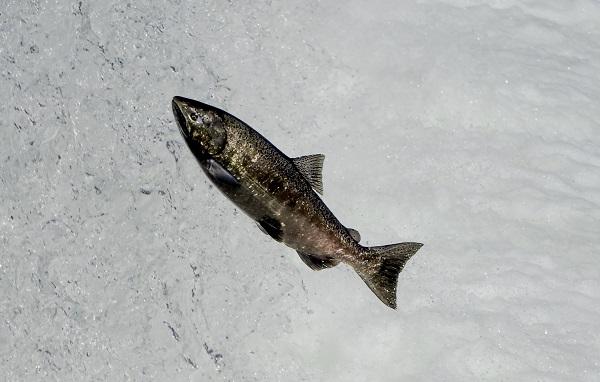
Chinook salmon
Chinook salmon are anadromous—they hatch in freshwater, migrate to the sea, then return to freshwater to breed. Sometimes called “King Salmon,” they are the largest of the Pacific Salmon. They range from the Monterey Bay area of California to the Chukchi Sea of Alaska.
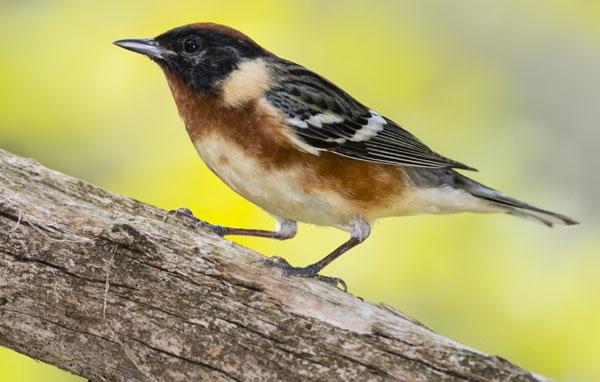
Bay-breasted warbler
Bay-breasted warblers nest in spruce and fir forests across Canada, and can be found in Maine, New Hampshire, Vermont and the Adirondack Park of New York. While they occupy similar habitats as Cape May and blackpoll warblers, bay-breasted warblers in particular forage at the inner mid-level, and nest in the lower third-level, of trees.
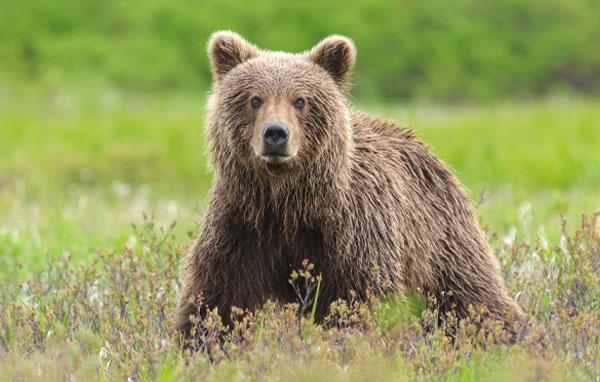
Grizzly bear
Grizzly bears are the North American subspecies of brown bears which roam throughout Canada and northwestern America. Grizzlies are omnivores, feeding on insects and deer alike. Come winter they descend into a deep sleep called torpor where they do not eat or drink until they emerge in the spring.
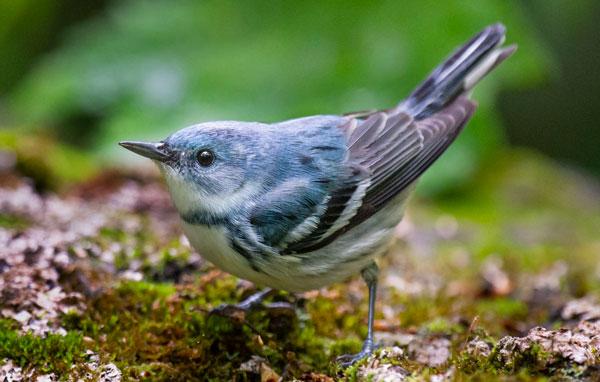
Cerulean warbler
The cerulean warbler is a small, migrant songbird named for the male's sky-blue plumage. It is dependent on contiguous tracts of mature, deciduous forest habitat throughout its breeding range in the eastern United States, and is particularly sensitive to the negative effects of forest fragmentation which has contributed to widespread population declines.
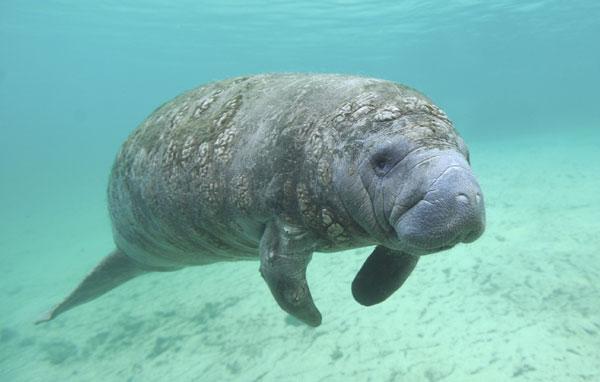
West Indian manatee
West Indian manatee have earned their nickname of “sea cows,” consuming about 32 pounds of aquatic plants each day and weighing more than 3,000 pounds. Found throughout the Caribbean, manatees are common in Florida where the populations have increased significantly in recent years, resulting in the species being downlisted from endangered to threatened in 2017.
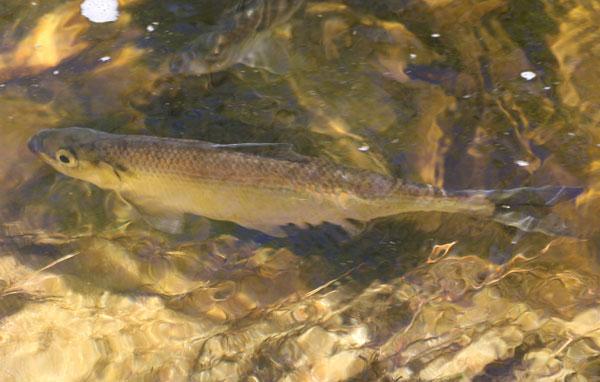
River herring
Alewife and blueback herring—collectively known as river herring—are diadromous fishes that spend most of their lives at sea but return to river and streams to spawn. Once abundant throughout the Atlantic seaboard, river herring populations have declined due to overfishing and habitat loss associated with the construction of dams. Recent conservation efforts have seen millions of river herring return to streams throughout New England, a promising sign not just for river herring, but also myriad other species that rely on them as an important food source.
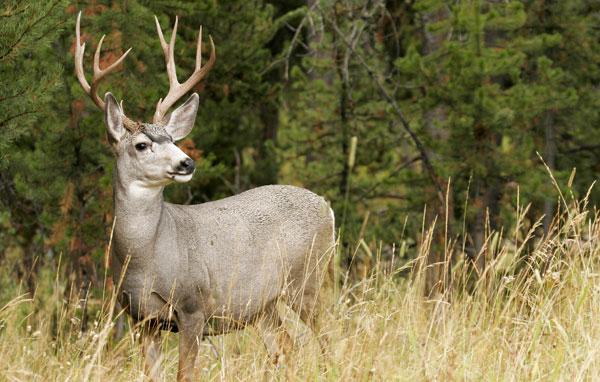
Mule deer
Mule deer are a social, migratory ungulate who are named for their large ears that resemble a mule's ears. An iconic species of the western United States, habitat loss and increased fragmentation of the landscape have caused localized declines in mule deer populations and reduced the function of critical migration paths.
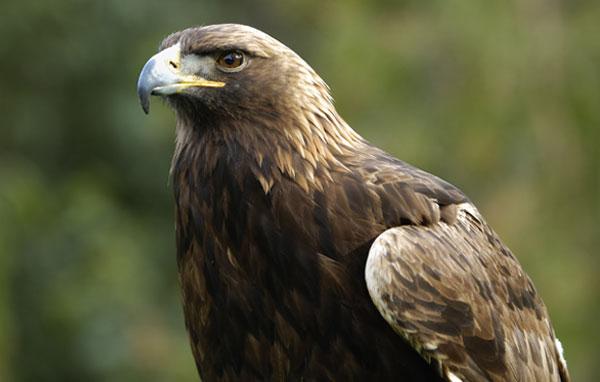
Golden eagle
The golden eagle is a Holarctic species that inhabits open country, in deserts, tundra, high altitudes or rangelands. Although it is widely distributed in the continental United States, its numbers are generally much greater in western states.
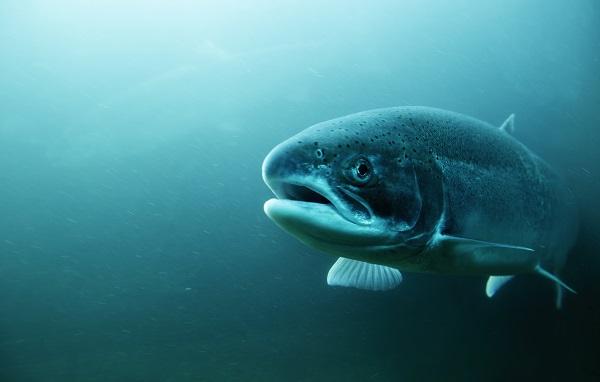
Steelhead trout
Steelhead trout are an anadromous species that live along the West Coast of the United States. While all steelhead trout return to freshwater to spawn, some stay in freshwater their whole lives and are referred to as rainbow trout. Steelhead trout are vulnerable to many stressors and threats, including blocked access to spawning grounds and habitat degradation caused by dams and culverts.

Villosa mussels (Coosa creekshell)
The Coosa creekshell is a species of freshwater mussel that are endemic to the Coosa River Drainage in Alabama, Georgia and Tennessee. Increased sedimentation and reduced aquatic connectivity for host fishes like sunfish and sculpins have caused population declines throughout their range.
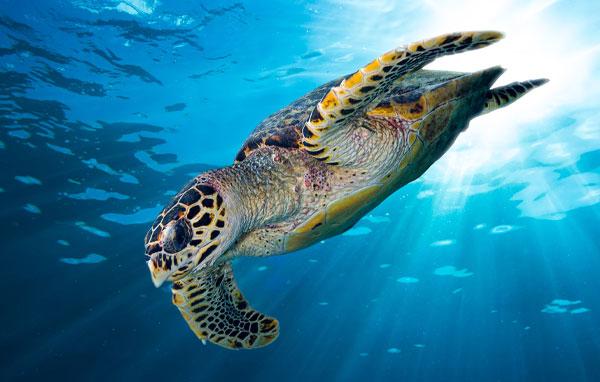
Sea turtles
There are seven different species of sea turtles, six of which are found in U.S. waters and are listed as threatened or endangered in a least a portion of their circumglobal range. These species include leatherback, loggerhead, Kemp’s ridley, olive ridley, green and hawksbill. For more than 100 million years, sea turtles have migrated long-distances over temperate and tropical oceans, spending most of their time at sea but returning to natal beaches to lay eggs.
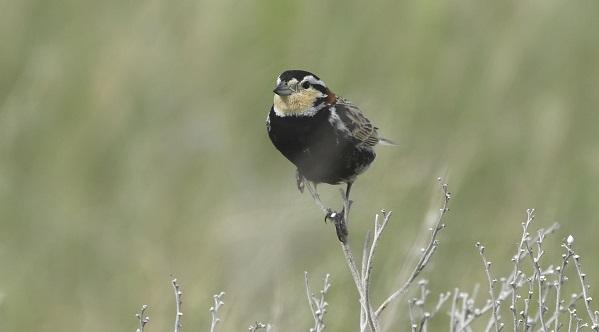
Chestnut-collared longspur
The chestnut-collared longspur is a striking songbird highly endemic to shortgrass prairies of North America and known for its aerial displays when defending their territory. Named for the long claw on their hind toe, these ground-nesting birds have been in decline due to loss of native prairie and pesticides that are thought to reduce hatching success.
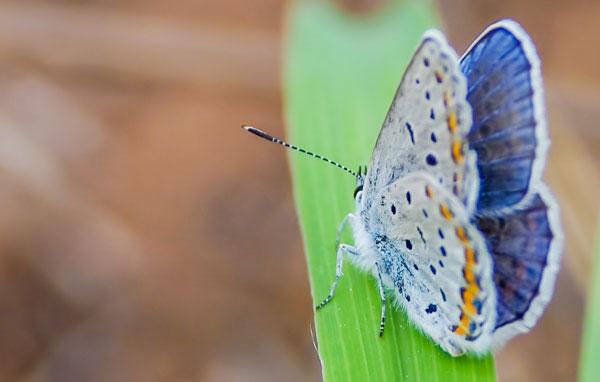
Karner blue butterfly
Karner blue butterflies measure only 1 inch wide, and are native to the oak savannas stretching from New York to Minnesota. The species requires specialized habitats where wild blue lupine is abundant, the exclusive food plant for Karner caterpillars. Populations were in steep decline following habitat loss and modifications, which prompted their listing as an endangered species in 1992.

Polar bear
Polar bears are found throughout the Arctic, with 19 populations spread across Alaska, Canada, Greenland, Norway and Russia. Due to their reliance on sea ice, and thus vulnerability to the effects of climate change, these large marine mammals are listed as threatened under the Endangered Species Act. Today, there are fewer than 4,000 bears within the U.S. populations.
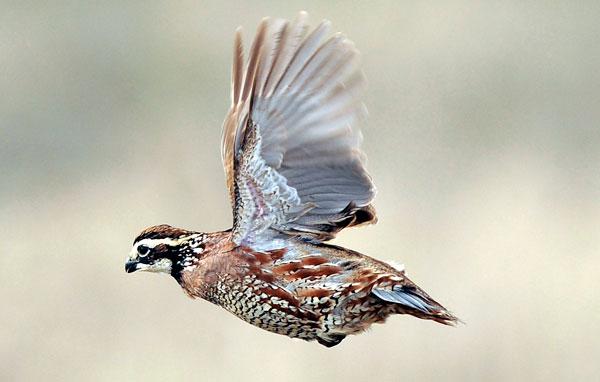
Northern bobwhite quail
One of the most economically important game birds, the northern bobwhite quail is named for the distinctive 'bob-white' mating call of males throughout the breeding season. Bobwhite quail prefer shrubby areas surrounding grasslands or agricultural fields and live in groups called "coveys" during the fall and winter.
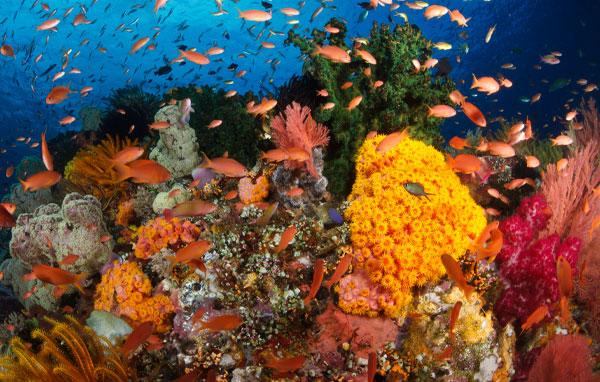
Corals
Found in shallow, tropical waters around the world, coral reefs are among the most iconic and diverse ecosystems on Earth. Despite covering less than 1 percent of the ocean, 25 percent of marine species rely on coral reefs, which are made up of many different species of coral. While corals are threatened by pollution, overfishing, disease and increasing ocean temperature resulting in widespread mortality, local conservation efforts coupled with advancements in coral restoration show promise for conserving this important ecosystem.
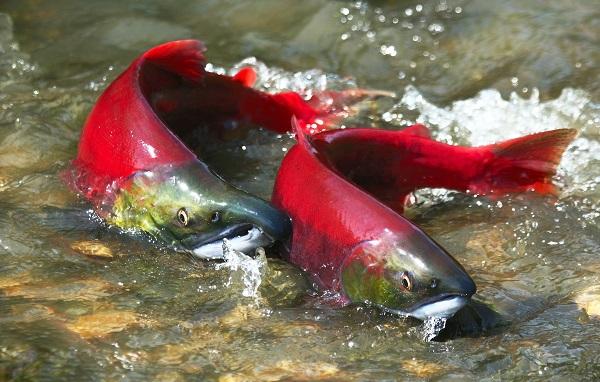
Sockeye salmon
Sockeye Salmon are normally anadromous – those that do not remain in freshwater their entire lives are sometimes known as “kokanee.” Sockeye suffer from degraded water quality, habitat loss, and changing ocean conditions. Progress is being made for this species via dam removal and efforts to increase instream flow.

Eastern oyster
Eastern oysters have played a particularly prominent role in the culture, history, and economy of the Chesapeake Bay and other areas throughout the Gulf and Atlantic Coasts. Reefs serve as important habitat for a variety of aquatic species. However, overharvesting, disease and declines in estuarine and bottom habitats have ravaged native oyster populations. Eastern oysters now represent less than 2 percent of their peak historical populations.

Red snapper
The red snapper is a long-lived reef fish typically found over deep reefs banks and rocky bottoms within the South Atlantic United States and the Gulf. Red snapper are one of the most popular sport fishes in the Gulf and support important recreational and commercial fisheries.
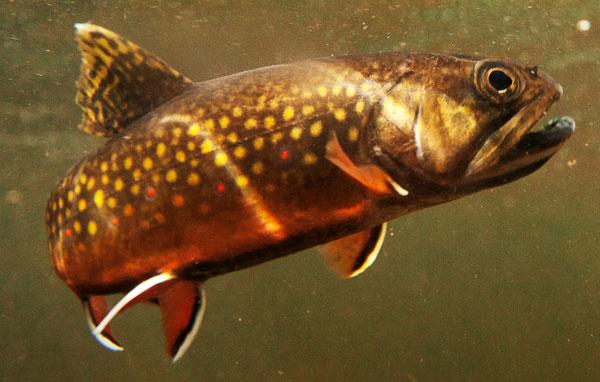
Brook trout
Brook trout are the only trout native to the eastern United States and inhabit coldwater rivers and lakes. Sensitive to even small declines in water quality and increases in sedimentation, brook trout can serve as excellent indicators of the health of a stream or river ecosystem.
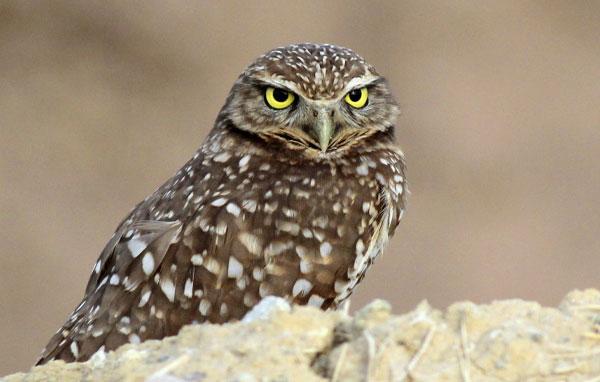
Burrowing owl
The burrowing owl is small with long legs and found in open country throughout the Americas. Within the United States it is largely a western bird, with an isolated population in Florida. While the species is associated with burrowing animals, the Florida population digs its own burrows.
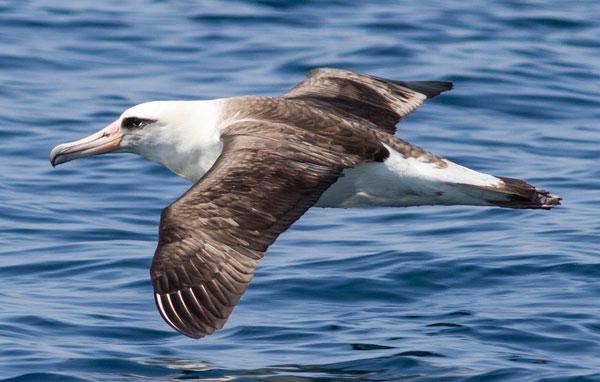
Pacific seabirds
Seabirds are a diverse group of species that disperse over vast ocean distances to seek food, often travelling far from breeding colonies on oceanic islands. They are able to live for decades and take three to eight years before starting to breed, after which they produce only 1 to 2 eggs every other year or so. Seabirds are impacted by their interaction with humans both on islands and in the ocean, which has driven many species to the brink of extinction.
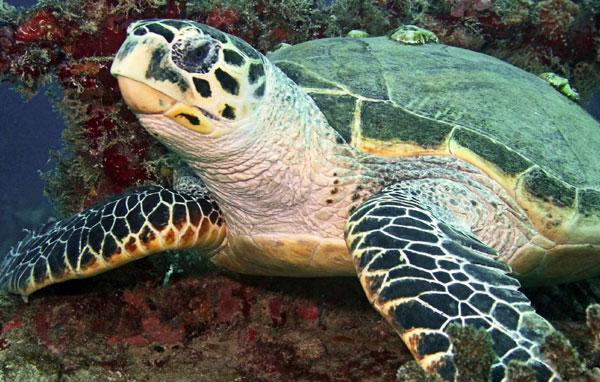
Northwest Atlantic loggerhead
Migrating far distances throughout the Atlantic Ocean from the Caribbean to Canada to the Mediterranean Sea, 90 percent of nesting activity for northwest Atlantic loggerhead sea turtles occur in Florida and the southeastern United States. The northwest Atlantic population has grown over the years showing positive signs of recovery, but loggerhead sea turtles continue to face threats from fishing and coastal development.
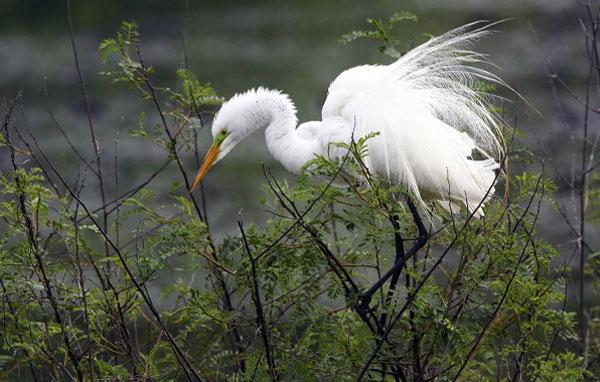
Great egret
The great egret is a common breeding species in many wetlands throughout the United States. However, this was not always the case. In the 19th and early 20th centuries, the bird was nearly eliminated from the country because of demand for its feathers as part of a hat trade. Following a ban on hunting the great egret in 1912, and the species has recovered to its former numbers.
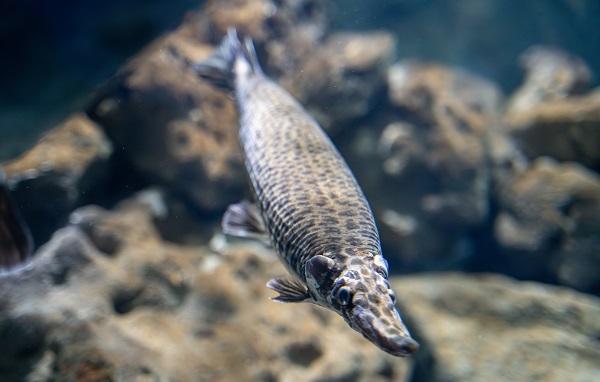
Alligator gar
Alligator gar—one of seven species of gar—is a long-lived species with evolutionary roots going back 180 million years. The alligator gar is the largest gar species alive today, averaging 6.5 feet in length and weighing up to 350 pounds. Interlocking, diamond-shaped scales act as chainmail to protect the alligator gar from predator attacks. Alligator gar range from southwestern Ohio and southern Illinois to the Mississippi River drainage basin. Their range continues south to the Gulf.
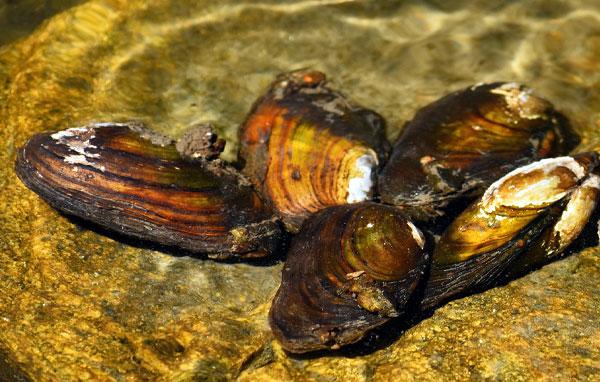
Freshwater mussels
Although mostly out of sight, the rivers of the United States are home to more than 300 freshwater mussel species – one of the highest counts in the world. They are beautiful and varied in terms of form, and important as indicators of stream health. Freshwater mussels not only depend on healthy waters, they contribute to that end by filtering vast amounts of water. Unfortunately, these species are at greater risk of extinction than any other group of its size in the nation.